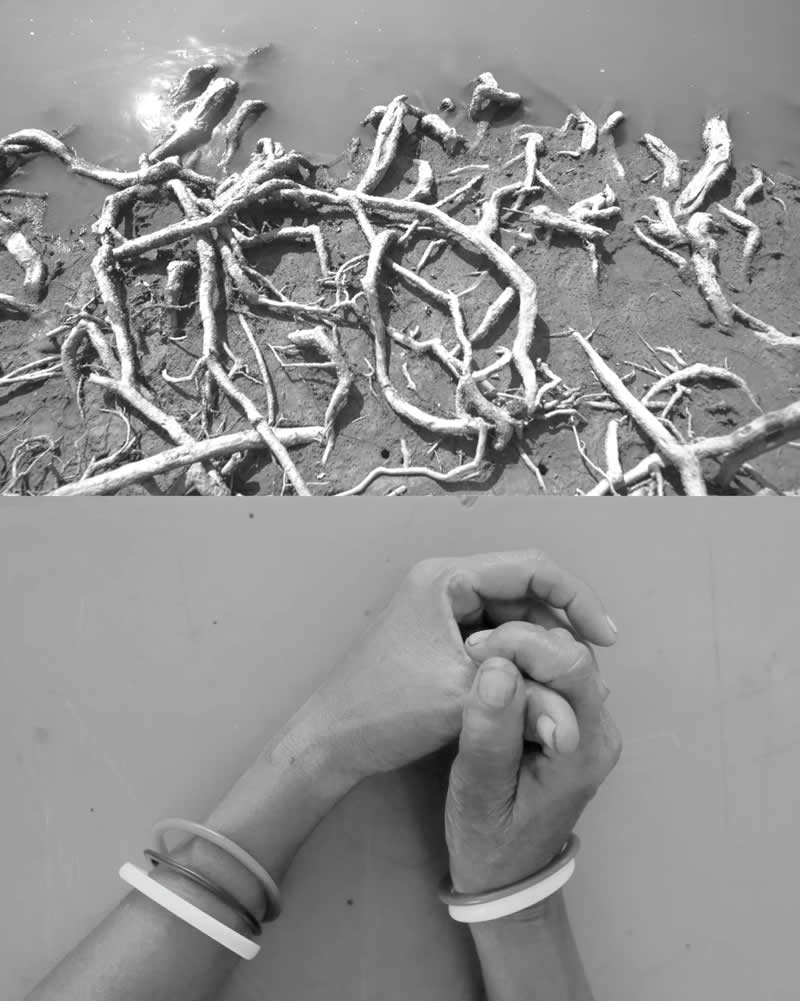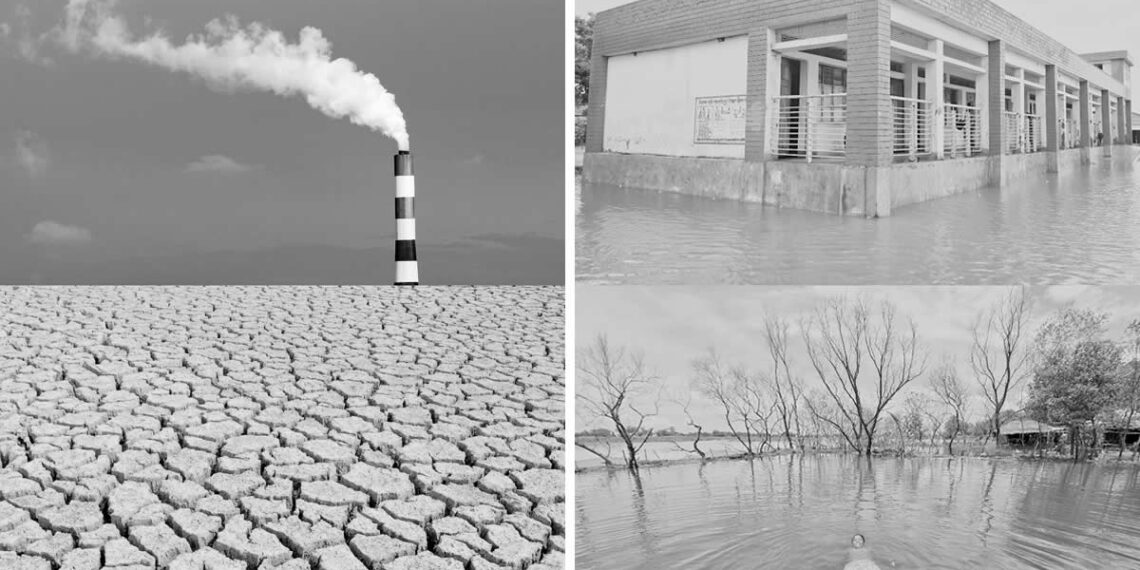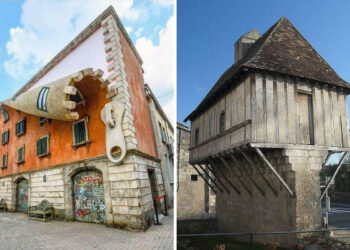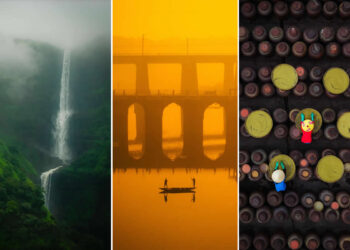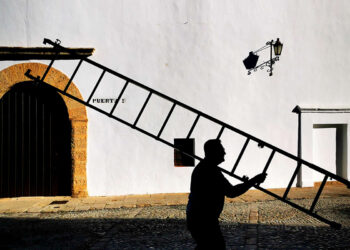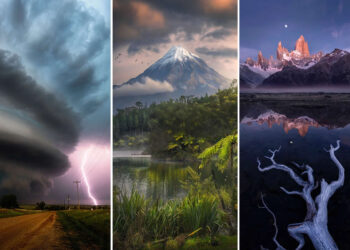In Fragments of a Changing Earth, Bangladeshi photographer Ab Rashid turns the lens into a poetic mirror—one that reflects not just the face of our planet, but the scars beneath its surface. His work moves beyond the obvious drama of climate change and dives deep into its quieter, more haunting truths. Through a blend of still life, landscape, and mixed-media art, Rashid constructs a dialogue between nature and human existence, where every crack, rust mark, and ripple of water becomes a metaphor for resilience and loss.
Based in Khulna, a region where the frontlines of climate change are not a distant reality but a daily experience, Rashid’s photography captures the emotional terrain of environmental transformation. The land and its people—rootless children, displaced families, and communities enduring saltwater intrusion—are not just subjects in his work; they are living symbols of adaptation and survival.
Rashid’s compositions are layered and deliberate. Soil, salt, rust, and water appear repeatedly, not as decorative textures but as echoes of endurance, decay, and renewal. Each frame whispers of time passing, of memory eroding, and of beauty born from fragility. His art resists the temptation to dramatize disaster; instead, it invites reflection. It asks us to pause—to see the poetry in silence, the emotion in stillness, and the humanity in the planet’s slow metamorphosis.
Ultimately, Fragments of a Changing Earth is more than a photo series—it’s a visual elegy. It captures the rhythm between destruction and rebirth, reminding us that the Earth doesn’t disappear when it changes—it transforms. And in that transformation, so do we.
You can find Ab Rashid on the Web:
#1
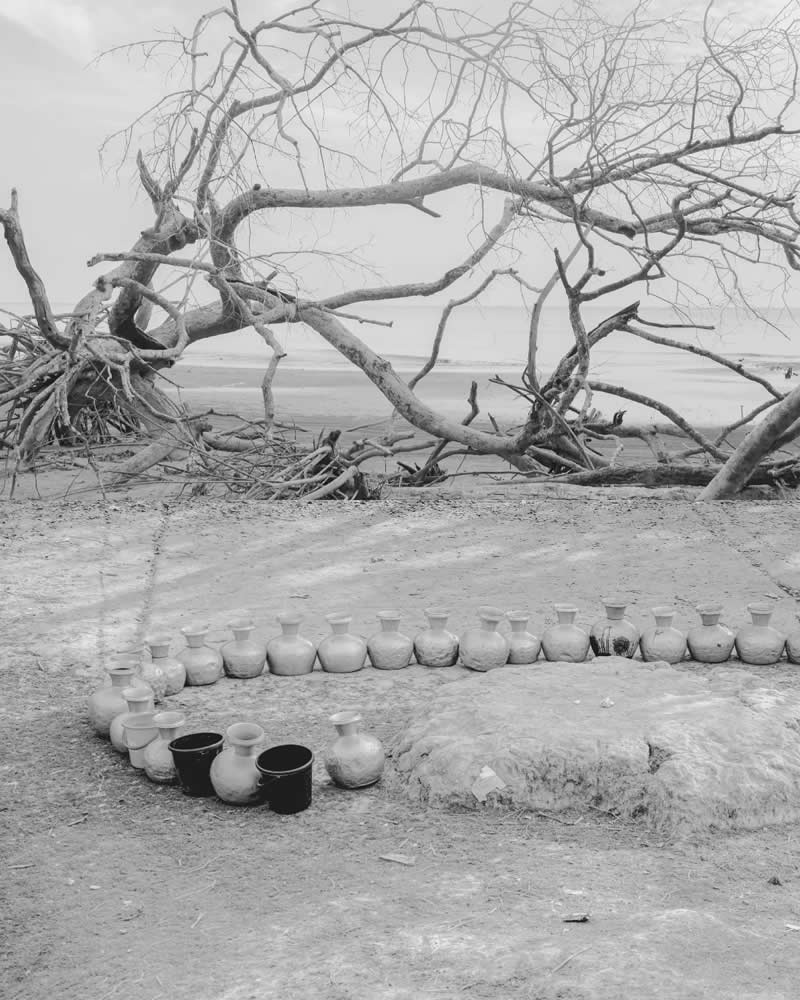
#2
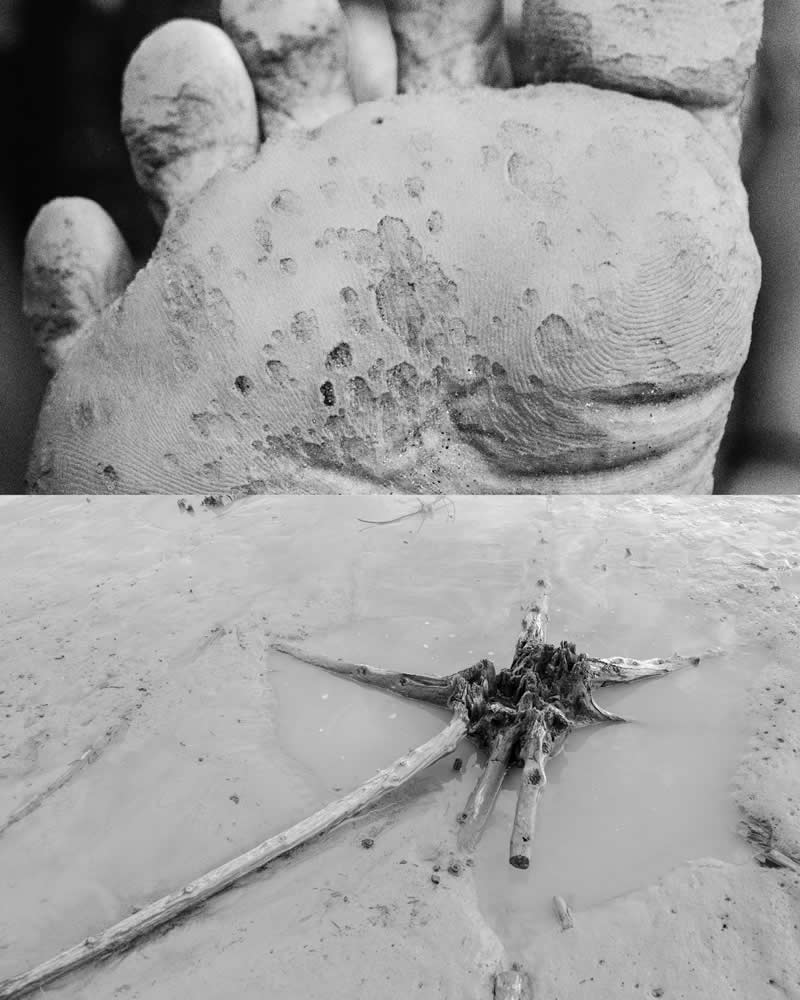
The Poetry of Transformation
Rashid’s art reveals that climate change isn’t just a scientific crisis—it’s a deeply emotional one. Through his lens, we see the planet as a living organism, breathing, breaking, and healing. His images of cracked soil, corroded metal, and weathered landscapes speak to the cycles of decay and renewal that define both Earth and humanity.
The familiar becomes symbolic: a leaf isn’t just dying—it’s telling the story of survival. Rashid’s framing blurs the boundary between documentation and meditation, turning environmental change into a poetic experience.
#3
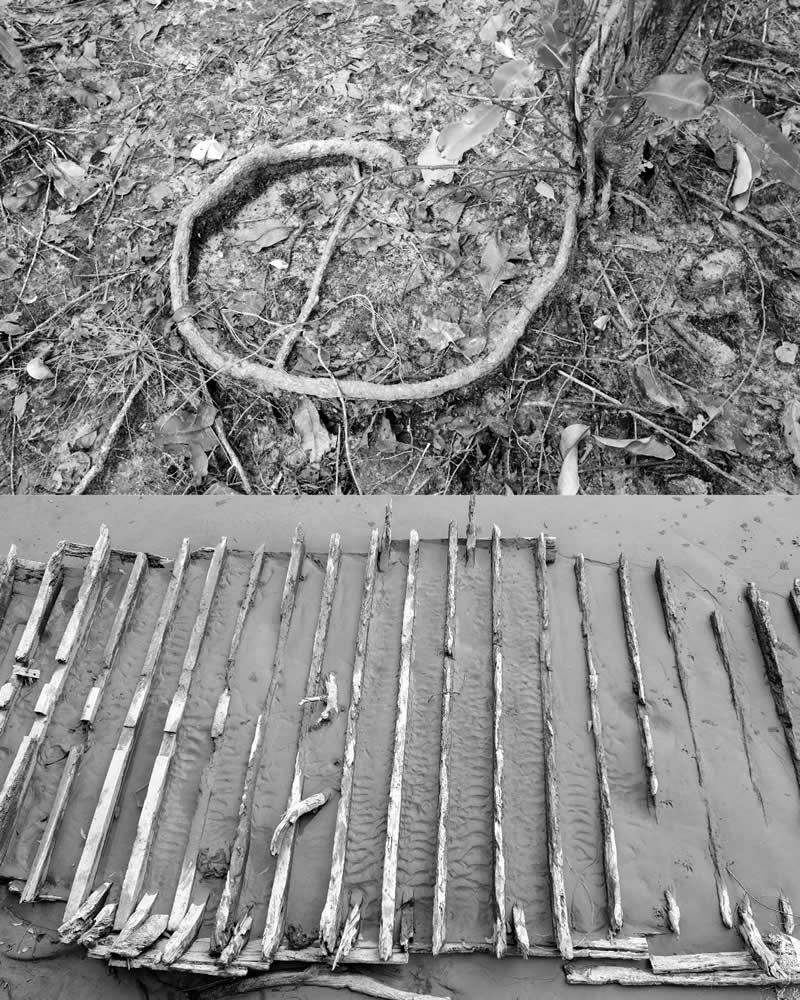
#4
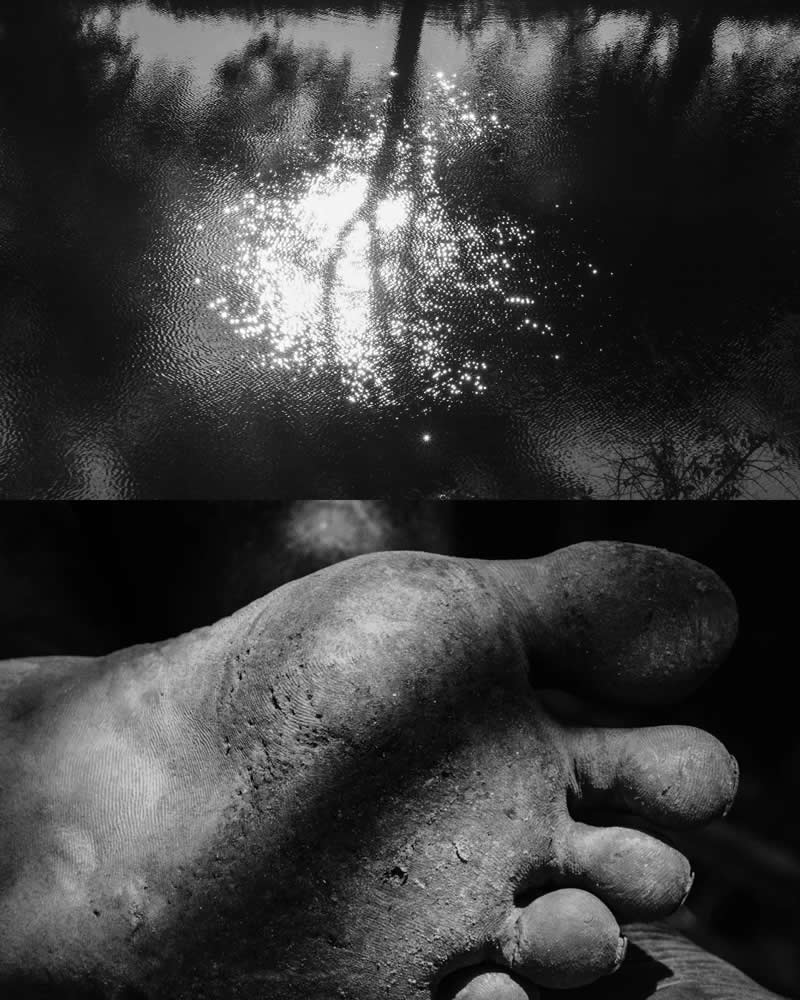
#5
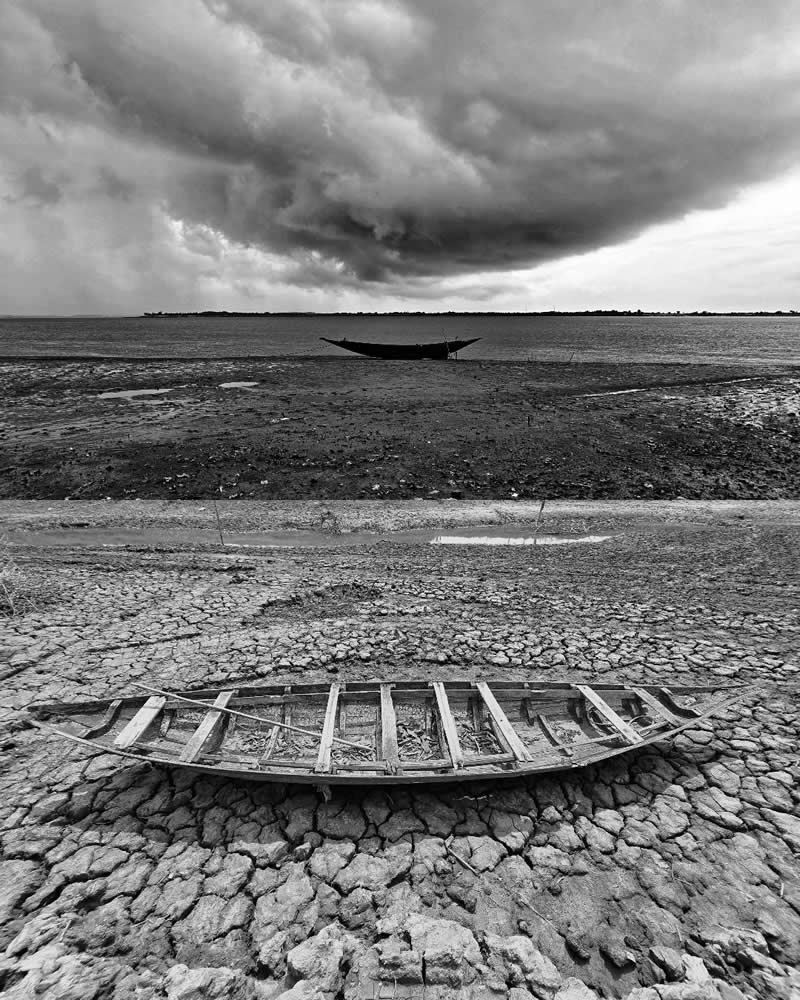
Nature as a Living Memory
For Rashid, nature is not merely a subject—it’s a presence. His work treats the environment as a living archive of time and memory, where erosion and rebirth are written into every grain of soil. The salt-stained walls, rusted tools, and waterlogged fields captured in his series are reminders that Earth remembers everything.
Through contrast, texture, and shadow, Rashid preserves the emotional memory of places slowly vanishing to rising tides and shifting seasons. His photos remind us that every landscape carries the weight of history—and the hope of renewal.
#6

#7
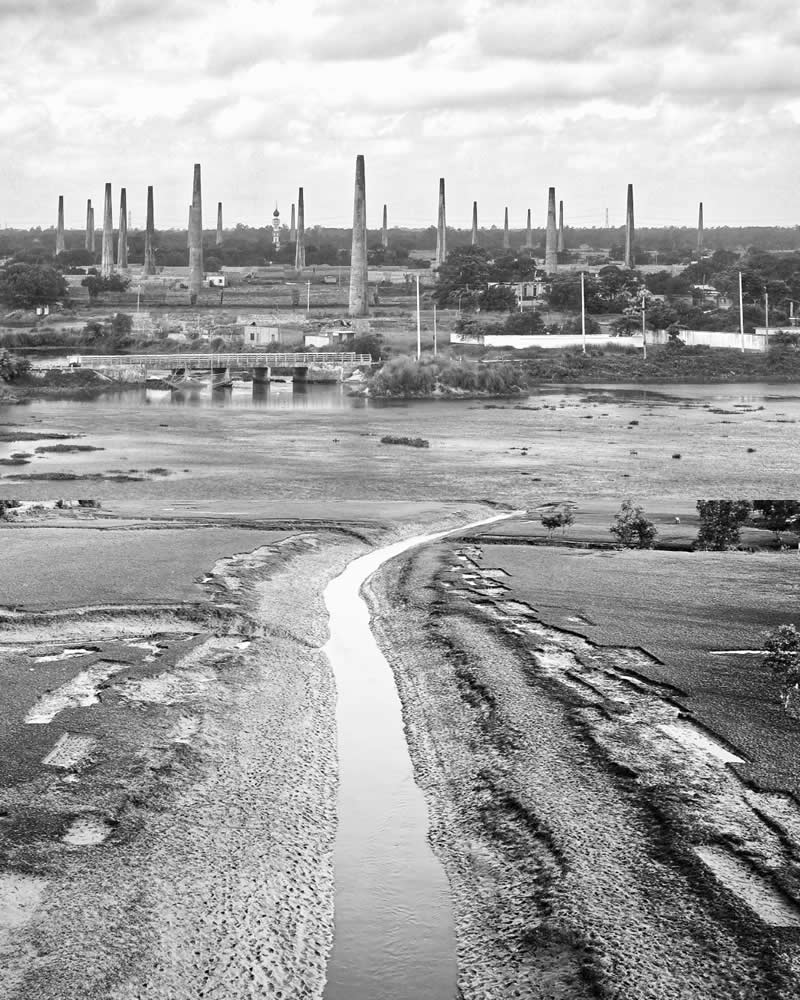
#8
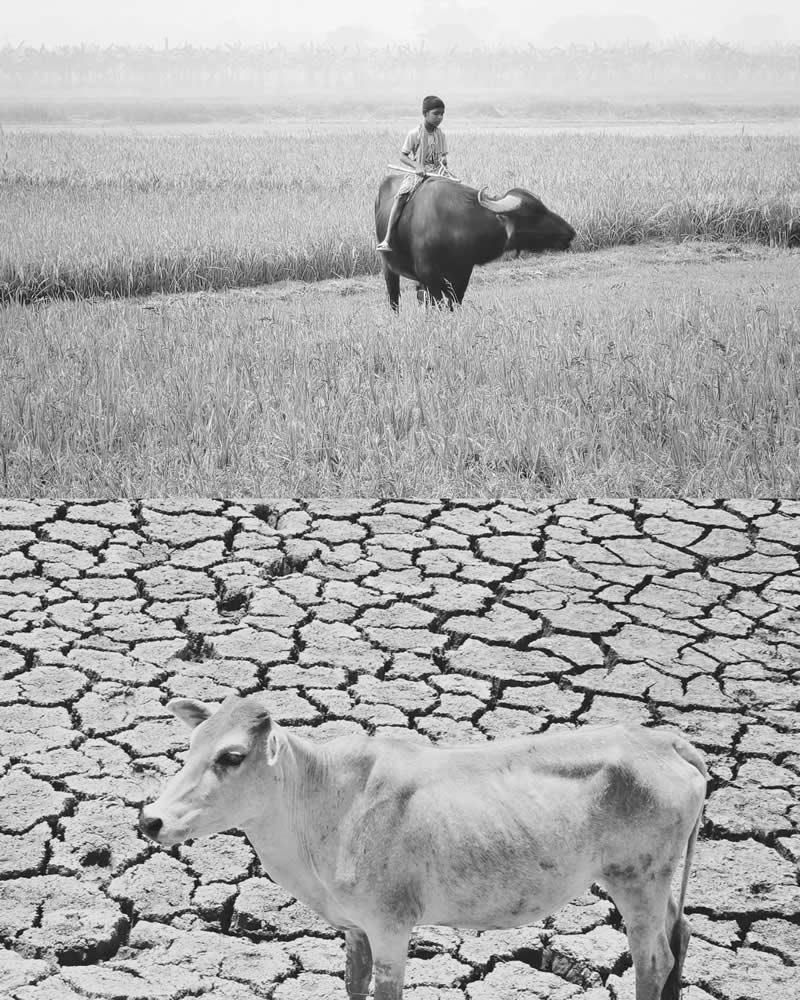
The Human Pulse of Climate Change
While the planet itself is Rashid’s canvas, people are his heartbeat. His photography doesn’t just document damage—it reveals dignity. Rootless children, women rebuilding homes, and farmers standing resilient in saline lands—all become symbols of endurance.
Rashid’s sensitivity to the human condition transforms his work from climate reportage into human storytelling. Every portrait is a quiet testament to the courage of those living on the edge of change, navigating loss and adaptation with grace and hope.
#9
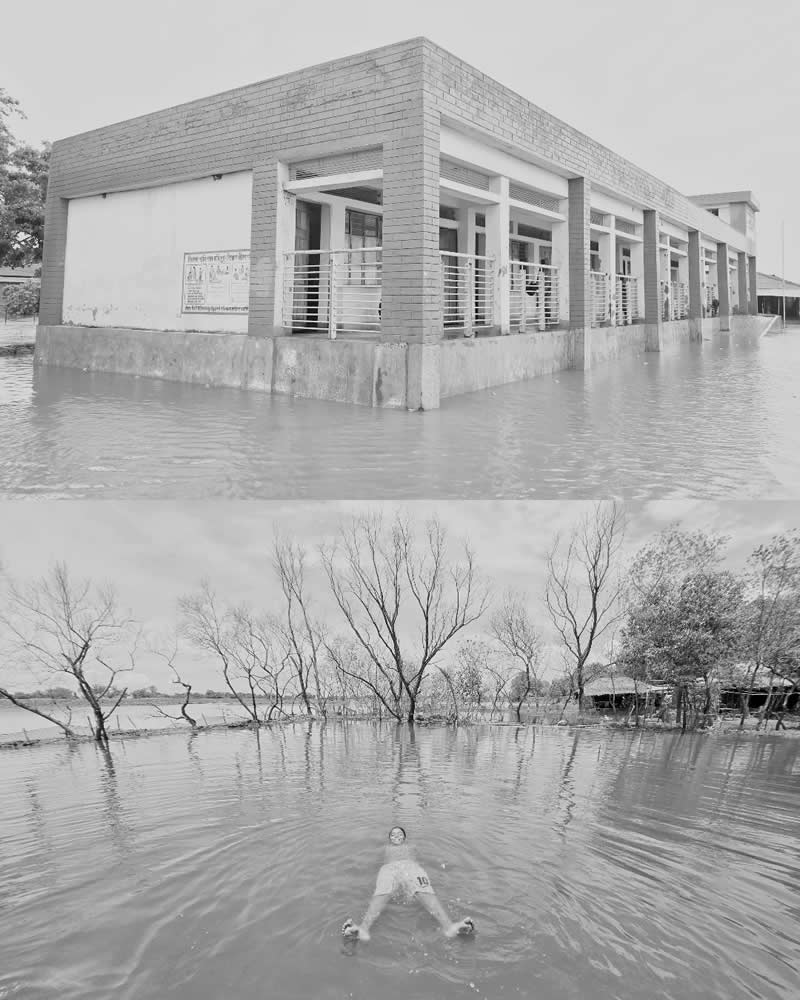
#10
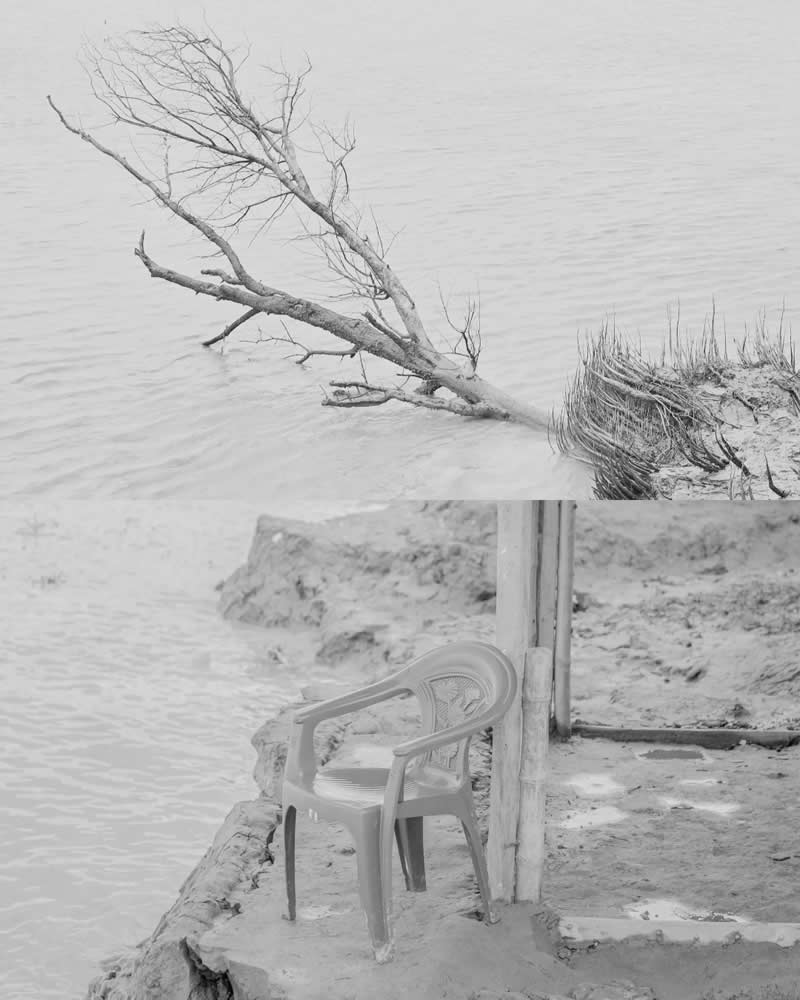
Between Silence and Storytelling
One of Rashid’s greatest strengths lies in his restraint. He avoids sensationalism, choosing instead the subtler poetics of change. Empty spaces, muted tones, and textures of decay become his language. Silence, in his images, speaks louder than any outcry. This thoughtful minimalism invites viewers to look deeper, to interpret rather than consume. Each photograph becomes a question, a meditation, and a mirror—reflecting our own connection to a world in flux.
#11
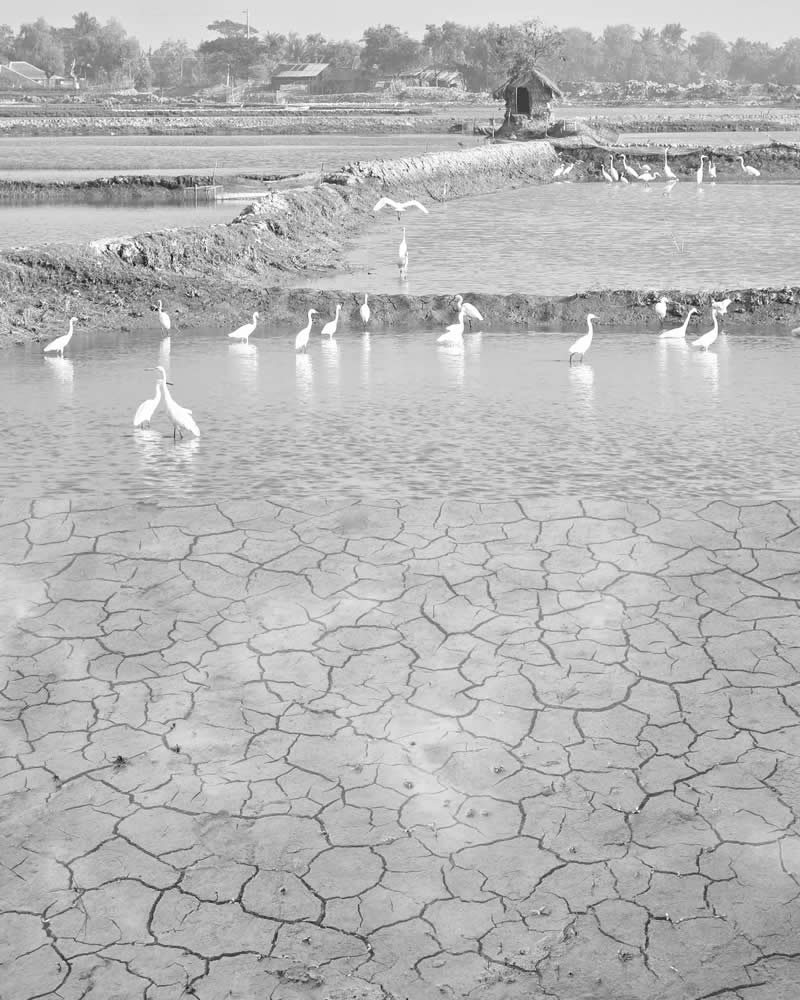
#12
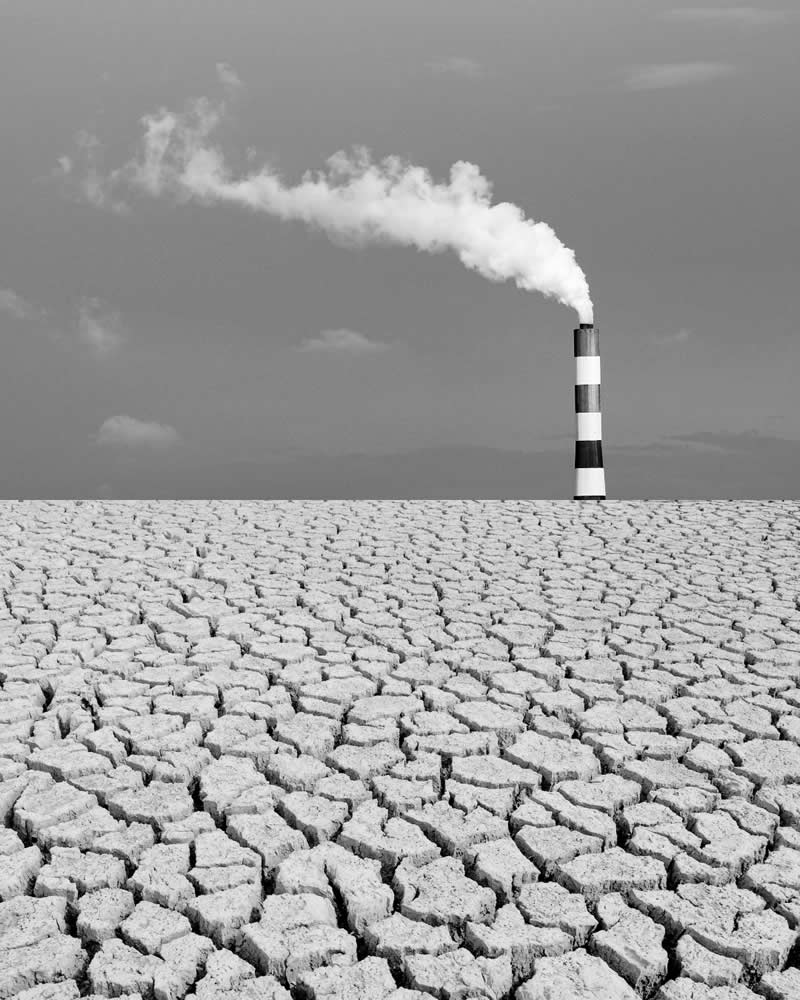
Art as Environmental Dialogue
Fragments of a Changing Earth isn’t just an artistic statement—it’s a call for awareness. Rashid’s work bridges art and activism, blending aesthetics with urgency. By merging material and metaphor, he turns climate change from a distant issue into an intimate conversation. His visuals inspire empathy rather than fear, inviting us to see the planet’s fragility as a shared responsibility. Rashid’s artistry reminds us that while change is inevitable, understanding it—feeling it—can lead to renewal.
#13
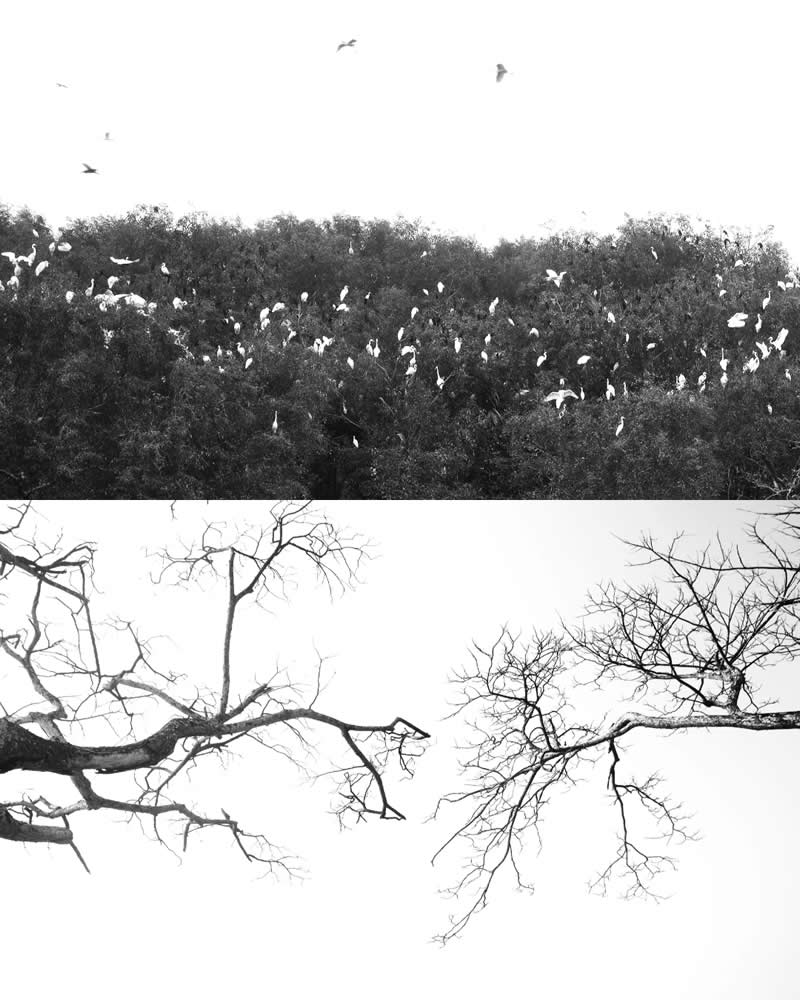
#14
